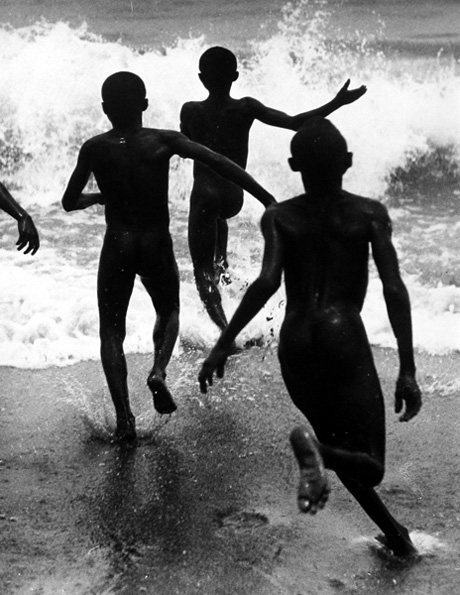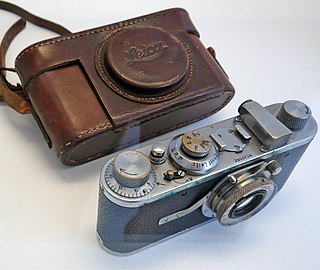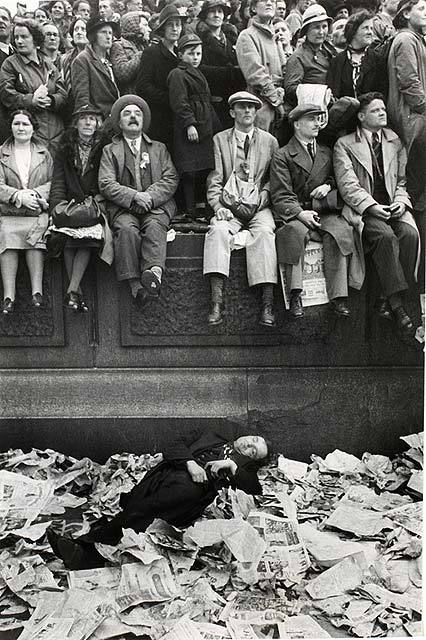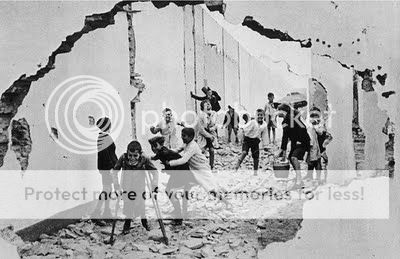Hamish Gill
Tech Support (and Marketing)
Bresson was born in 1908 in Canteloup in Fance into a family involved in the production of textiles. He was introduced to visual art by his uncle; and oil painter. His Uncle dies in the first world war, but Bresson's interest in painting continued particularly in the area of surrealism.

(one of my favorite Bresson photos... in fact, one of my favorite photos...)
https://wizardacademy.org/scripts/openextra.asp?extra=60
Through a frustration in painting and inspired by a photograph by Martin Munkacsi he turned to photography.

"Three Boys at Lake Tanganyika" By Martin Munkacsi
The above photo is accredited by Bresson as the only photo to have influenced him...
Although having previously used other cameras (including a Box Brownie) it was at this time that his life long passion for photography and usage of Leica cameras began!
He felt that the Leica gave him a freedom to shoot and capture life as it happened, he supposedly even went as far to paint the silver parts of his Leica black ... Although it doesn't look very black in this photo... I guess the paint came off in use

File:Cartier-Bresson's first Leica.jpg - Wikipedia, the free encyclopedia
His technique was to take the photo with the camera and not in the darkroom, he often printed his photos to include the clear part of the negative around the frame. This discipline is IMO probably one of the main causes of what I see as snobbery toward people who crop and edit photos post process ... I have to say I really don't follow this discipline... preferring to make sure I get the moment! I suspect this is testament to Bresson's skill, for not only did he capture the "decisive moment" but he did it without cropping!!
Bresson is quoted to have said that he "Prowled the streets all day, feeling very strung-up and ready to pounce, ready to 'trap' life" and is also credited with coining the term "The Decisive Moment" which became the English title of his first book published later on in his life in 1952.

One of Bressons most famous images that portrays "Decisive Moment" Photography perfectly.
He said of the photo: "There was a plank fence around some repairs behind the Gare Saint-Lazare train station. I happened to be peeking through a gap in the fence with my camera at the moment the man jumped."
In 1934 Bresson met David Seymour who in turn introduced him to Robert Capa.
Capa mentored Bresson and encouraged him into Photojournalism, apparently saying to him "Don't keep the label of a surrealist photographer. Be a photojournalist. If not you will fall into mannerism. Keep surrealism in your little heart, my dear. Don't fidget. Get moving"
His career as a photojournalist included coverage of King George VI where he only took photos of the crowd

ref. Henri Cartier-Bresson « Iconic Photos
After services in World War II where he was captured to then eventually (after 3 attempts) escaped a Nazi camp he Photographed the occupation and liberation of Paris

ref. Imagen Latente: Su vida es la Fotografía, su obra nuestra inspiración
After the war, in 1947 Bresson along with Robert Capa, George Rodger, David Seymour and William Vandivert fromed Magnum Photos
Bresson received international recognition photographing Gandhi's funeral and went on to shoot a huge variety of subjects including the communist takeover of China and images taken to help combat racism in America!
More Images
Image gallery at Magnum http://www.magnumphotos.com/C.aspx?...1=0&pid=2K7O3R14T1LX&nm=Henri Cartier-Bresson
Some great shots here at Phaidon The decisive moment: Henri Cartier-Bresson | Photography | Agenda | Phaidon
In 2003 he formed the Fondation Henri Cartier Bresson
Fondation Henri Cartier-Bresson
He died in 2004
More reading:
Cartier-Bresson: What's the story? - Life & Style - The Independent
Henri Cartier-Bresson - Wikipedia, the free encyclopedia

(one of my favorite Bresson photos... in fact, one of my favorite photos...)
https://wizardacademy.org/scripts/openextra.asp?extra=60
Through a frustration in painting and inspired by a photograph by Martin Munkacsi he turned to photography.
"Three Boys at Lake Tanganyika" By Martin Munkacsi
The above photo is accredited by Bresson as the only photo to have influenced him...
ref. Three Boys at Lake Tanganyika « Iconic Photos“In 1932, I saw a photograph by Martin Munkácsi of three black children running into the sea and I must say that it is that very photograph which was for me the spark that set fire to fireworks. I suddenly understood that photography can fix eternity in a moment …. [it] made me suddenly realise that photography could reach eternity through the moment. I couldn’t believe such a thing could be caught with the camera. I said damn it, I took my camera and went out into the street.’”
Although having previously used other cameras (including a Box Brownie) it was at this time that his life long passion for photography and usage of Leica cameras began!
He felt that the Leica gave him a freedom to shoot and capture life as it happened, he supposedly even went as far to paint the silver parts of his Leica black ... Although it doesn't look very black in this photo... I guess the paint came off in use

File:Cartier-Bresson's first Leica.jpg - Wikipedia, the free encyclopedia
His technique was to take the photo with the camera and not in the darkroom, he often printed his photos to include the clear part of the negative around the frame. This discipline is IMO probably one of the main causes of what I see as snobbery toward people who crop and edit photos post process ... I have to say I really don't follow this discipline... preferring to make sure I get the moment! I suspect this is testament to Bresson's skill, for not only did he capture the "decisive moment" but he did it without cropping!!
Bresson is quoted to have said that he "Prowled the streets all day, feeling very strung-up and ready to pounce, ready to 'trap' life" and is also credited with coining the term "The Decisive Moment" which became the English title of his first book published later on in his life in 1952.

One of Bressons most famous images that portrays "Decisive Moment" Photography perfectly.
He said of the photo: "There was a plank fence around some repairs behind the Gare Saint-Lazare train station. I happened to be peeking through a gap in the fence with my camera at the moment the man jumped."
In 1934 Bresson met David Seymour who in turn introduced him to Robert Capa.
Capa mentored Bresson and encouraged him into Photojournalism, apparently saying to him "Don't keep the label of a surrealist photographer. Be a photojournalist. If not you will fall into mannerism. Keep surrealism in your little heart, my dear. Don't fidget. Get moving"
His career as a photojournalist included coverage of King George VI where he only took photos of the crowd
ref. Henri Cartier-Bresson « Iconic Photos
After services in World War II where he was captured to then eventually (after 3 attempts) escaped a Nazi camp he Photographed the occupation and liberation of Paris

ref. Imagen Latente: Su vida es la Fotografía, su obra nuestra inspiración
After the war, in 1947 Bresson along with Robert Capa, George Rodger, David Seymour and William Vandivert fromed Magnum Photos
"Magnum is a community of thought, a shared human quality, a curiosity about what is going on in the world, a respect for what is going on and a desire to transcribe it visually." - Bresson
Magnum Photos is a photographic co-operative of great diversity and distinction owned by its photographer-members. With powerful individual vision, Magnum photographers chronicle the world and interpret its peoples, events, issues and personalities. Through its four editorial offices in New York, London, Paris and Tokyo, and a network of fifteen sub-agents, Magnum Photos provides photographs to the press, publishers, advertising, television, galleries and museums across the world.
Bresson received international recognition photographing Gandhi's funeral and went on to shoot a huge variety of subjects including the communist takeover of China and images taken to help combat racism in America!
More Images
Image gallery at Magnum http://www.magnumphotos.com/C.aspx?...1=0&pid=2K7O3R14T1LX&nm=Henri Cartier-Bresson
Some great shots here at Phaidon The decisive moment: Henri Cartier-Bresson | Photography | Agenda | Phaidon
In 2003 he formed the Fondation Henri Cartier Bresson
Fondation Henri Cartier-Bresson
For me the camera is a sketch book, an instrument of intuition and spontaneity, the master of the instant which, in visual terms, questions and decides simultaneously. In order to “give a meaning” to the world, one has to feel involved in what one frames through the viewfinder. This attitude requires concentration, discipline of mind, sensitivity, and a sense of geometry. It is by economy of means that one arrives at simplicity of expression.
To take a photograph is to hold one’s breath when all faculties converge in a face of fleeing reality. It is at that moment that mastering an image becomes a great physical and intellectual joy.
To take a photograph means to recognize – simultaneously and within a fraction of a second– both the fact itself and the rigorous organisation of visually perceived forms that give it meaning.
It is putting one’s head, one’s eye, and one’s heart on the same axis.
He died in 2004
More reading:
Cartier-Bresson: What's the story? - Life & Style - The Independent
Henri Cartier-Bresson - Wikipedia, the free encyclopedia
